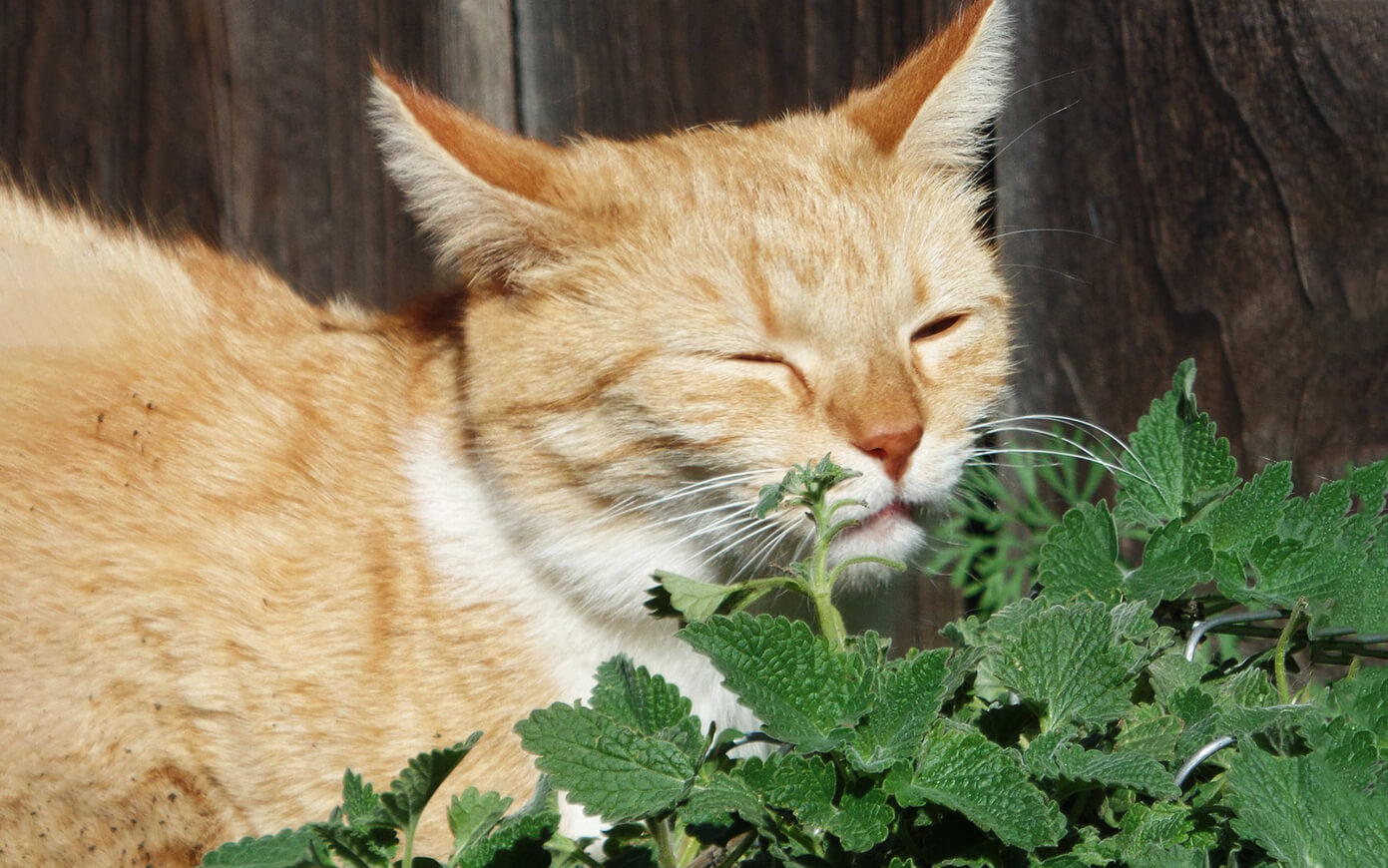“If you plant it, cats will dance around it.” This is what a 200-year-old herbal book about catnip says. Our fur-noses don’t really swing their legs, but many react with interest when they notice the herb. In the following, you will find out why catnip is attractive to velvet paws and how you can give your cat green pleasure.
Why Does Catnip Make Cats Crazy: The Effects of Catnip (Nepeta Cataria)?
Real catnip, cat herb, cat balm, or catnip – the names of the plants underline that their effect on fur noses has been known for centuries. Incidentally, this applies not only to our mini tigers but also to their larger relatives, i.e. real tigers or lions. Cats usually show unusual behavior when they react to fresh leaves of the pleasantly mint-scented plant.
There is a clever concept behind the attraction of the herb: The felines nibble on the leaves and wallow in delight in the tempting green. The fruits of the catnip get stuck in the fur – a clever strategy for spreading! Male cats in particular love catnip for a reason. Actinidine – an active ingredient that uncastrated female cats excrete in their urine – is tempting for cats. The alkaloid nepetalactone also contributes to the fact that the herb magically attracts numerous cats. The exact mode of action is not known – after all, many female animals also like mint.
Some scientists suspect that the combination of scents puts the cat into a real intoxication.
Is Catnip Harmful to Cats?

Like cat grass, real catnip is safe for cats! Whether they roll around in it or nibble the leaves of the plant – you can allow your furry friend to have fun without worrying. Some cats seem to make the greenery aggressive: They hiss or look visibly upset when they come into contact with the wonder plant. In this case, you should refrain from planting the plant in large quantities in the garden or using it in the apartment.
How Much Catnip Should I Give My Cat?
Fresh or ready to play – there are different ways to please your furry friend with the herb:
Planting catnip in the garden
Do you have a garden or a balcony? Optimal conditions for growing your own catnip! You can get Nepeta cataria – its botanical name – in every well-stocked nursery as a perennial plant. Alternatively, you can sow the herb in spring or autumn. The mint reproduces independently under good conditions so that you can enjoy it for many years. The 40 cm high plant thrives best in sunny places in the bed or in the tub. It looks particularly pretty in combination with lavender.
Catnip as a houseplant
Catnip is one of the outdoor perennials. If you bring it indoors as a potted plant, the plant won’t last long. If you want to make indoor cats happy, you can achieve this with a plant in a pot for a few weeks. Then put the plant back outside – if there is anything left of it. A small balcony is enough to plant the herb outside.
Dried catnip in toys & catnip spray
If you cherish and care for your own catnip, you can take care of your cat yourself with the wonder herb. To do this, you should harvest the stems during the flowering period from June to August. Shake them to get rid of dirt by shaking them – not washing them – and then let them dry in bundles hanging upside down. For this, choose a warm, dry place without a lot of sunlight. An attic is often ideal. Once the mint has dried, store it in airtight containers to preserve the aroma. Now, for example, fill the plant in old socks that you knot and let your cat play with them.
Alternatively, you can find dried catnip in stores or numerous toys filled with it. Whether homemade or bought: make sure that the toy does not pose any danger. For example, through swallowable buttons or something similar that the velvet paw could ingest in the heat of the moment.
Always put away toys with catnip after the game to keep them interesting until the next time.
Catnip spray is also available in stores, which is best for spraying on toys or scratching furniture if the cat is not (yet) interested in them. Use such sprays only sparingly so as not to permanently irritate the smell communication of the cat.

